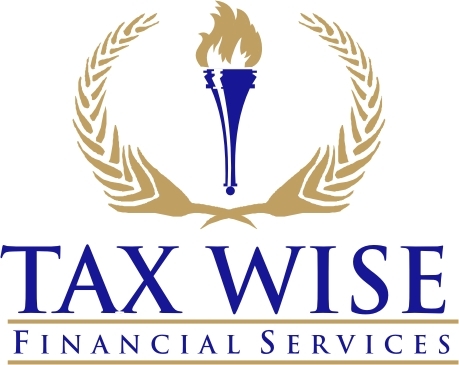
Introduction
If you’re wondering how to fund a child’s college education tax-free in 2025, you’re not alone. Saving for college can be a daunting task, but it doesn’t have to be overwhelming. The right savings tools can help you avoid unnecessary taxes, letting your money grow without the extra cost. In this article, we’ll explore some of the best ways to fund a child’s college education tax-free, so you can make smart decisions and maximize your savings.
Section 1: Why Saving for College is So Important
The cost of college is rising every year. In 2025, the price of tuition, fees, and other expenses is expected to keep climbing. By saving early, you can avoid the stress of having to come up with large sums of money later. One of the smartest ways to save is to minimize the taxes you’ll pay on your savings. By using tax-advantaged accounts, you can help your savings grow without paying extra taxes. Let’s explore how to fund a child’s college education tax-free in 2025 and which options make the most sense for your situation.
Section 2: 529 College Savings Plan – A Top Choice
A 529 College Savings Plan is one of the best ways to fund a child’s college education tax-free. It’s specifically designed for education savings, and it offers significant tax advantages that can help your savings grow.
How a 529 Plan Works
The 529 plan allows parents to contribute money that grows tax-deferred. This means you don’t pay taxes on any gains while the money is in the account. When it’s time to withdraw the money for qualified education expenses, such as tuition, books, and room and board, the funds are used tax-free.
Benefits of the 529 Plan
- Tax-Free Growth: Your investment grows tax-free as long as it’s used for qualified education expenses.
- State Tax Benefits: Many states offer additional tax breaks for contributing to a 529 plan, so check your state’s rules for extra savings.
- Flexibility: The funds can be used at most colleges and universities, and if your child doesn’t use all the money, you can transfer the funds to another family member.
In 2025, the 529 plan continues to be a leading way to fund a child’s college education tax-free. It’s flexible, tax-efficient, and designed to help families save for college without unnecessary tax burdens.
Section 3: Custodial Accounts (UGMA/UTMA)
Another option for saving for college is a custodial account, specifically a UGMA (Uniform Gifts to Minors Act) or UTMA (Uniform Transfers to Minors Act) account. While not designed specifically for education expenses, these accounts can still be a useful tool for parents saving for college.
How Custodial Accounts Work
With a custodial account, a parent or guardian manages the account until the child reaches adulthood (usually 18 or 21). You can use the funds for anything that benefits the child, including college expenses. However, once the child reaches the legal age, they can use the funds for anything, not just education.
Taxes and Custodial Accounts
Custodial accounts do not provide the same tax benefits as a 529 plan. The first $1,100 of income generated by the account is tax-free, and the next $1,100 is taxed at the child’s tax rate. Any income above $2,200 is taxed at the parent’s rate. While this option is less tax-efficient than a 529 plan, it still provides some flexibility for saving.
Section 4: Coverdell Education Savings Account (ESA)
The Coverdell Education Savings Account (ESA) is another way to save for a child’s education expenses. Like the 529 plan, the Coverdell ESA offers tax-free growth and tax-free withdrawals for qualified educational expenses.
How the Coverdell ESA Works
The Coverdell ESA allows you to contribute up to $2,000 per year for each child. The money grows tax-free, and when you withdraw it to pay for education expenses, you won’t pay taxes on the funds. Unlike a 529 plan, the Coverdell ESA can be used for both K-12 and college expenses, making it a flexible option.
Why Choose a Coverdell ESA?
The Coverdell ESA is a great choice if you want to save for both K-12 and college expenses. While the contribution limit is lower than a 529 plan, it gives you more flexibility in how the funds are used.
Section 5: Comparing Your Options
Now that we’ve explored the main ways to fund a child’s college education tax-free, let’s compare them:
| Plan Type | Tax-Free Growth | Tax-Free Withdrawals | Contribution Limits | Flexibility |
|---|---|---|---|---|
| 529 College Savings | Yes | Yes | No limit on growth; $300,000+ in some states | High (for education) |
| Custodial Accounts (UGMA/UTMA) | No | No | Varies | Very high |
| Coverdell ESA | Yes | Yes | $2,000 per year | Moderate (for education) |
Conclusion
When planning for your child’s future education, finding the best way to fund a child’s college education tax-free in 2025 is essential. Whether you choose a 529 plan, a custodial account, or a Coverdell ESA, each option has its strengths and weaknesses. The 529 plan remains the top choice for most families due to its high flexibility and tax-free growth. Custodial accounts provide more general use but come with fewer tax advantages. Meanwhile, the Coverdell ESA is perfect for families looking to save for both K-12 and college expenses.
By understanding the differences and choosing the right plan, you can ensure your child’s college education is funded in the most tax-efficient way possible.


